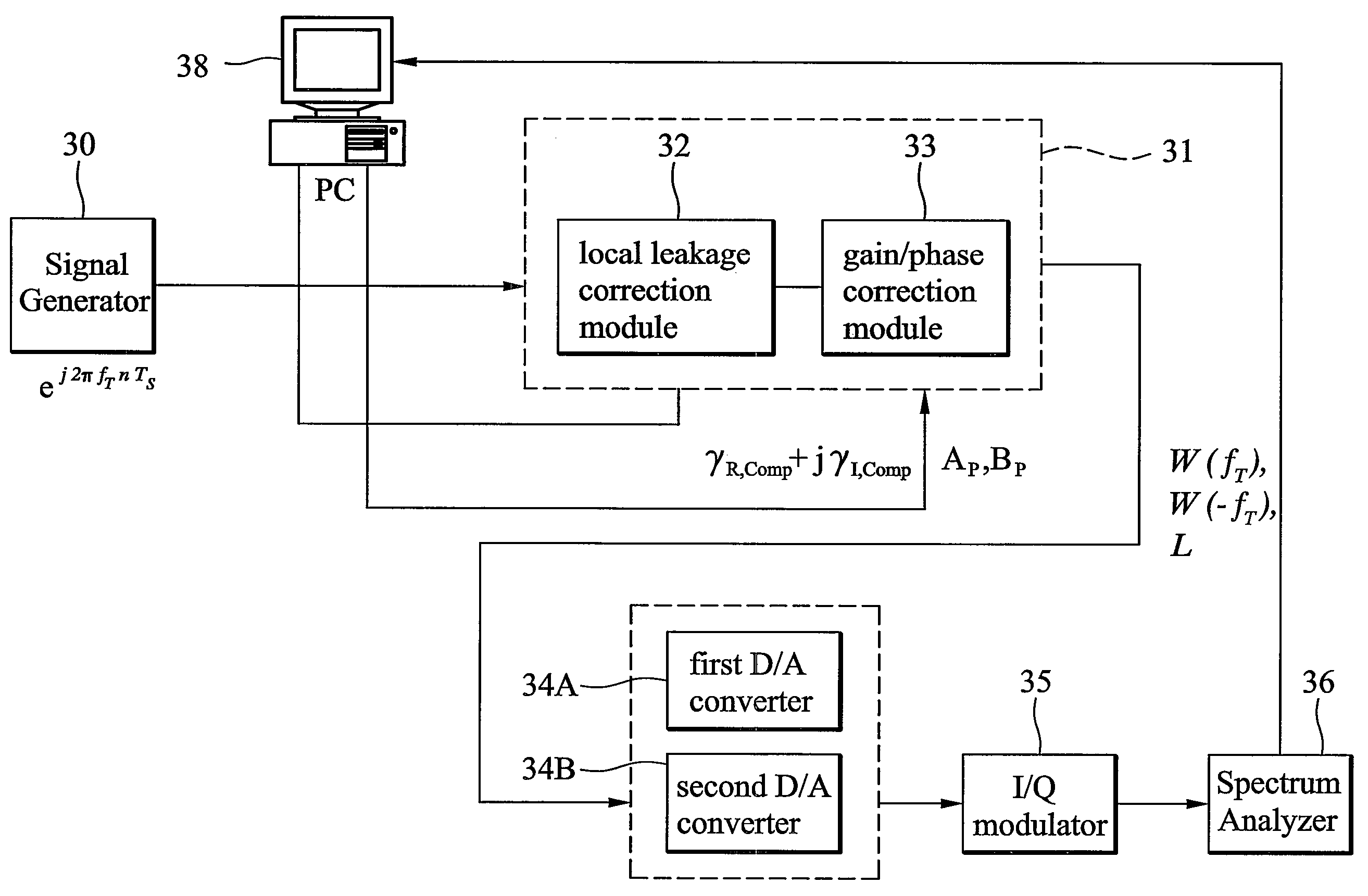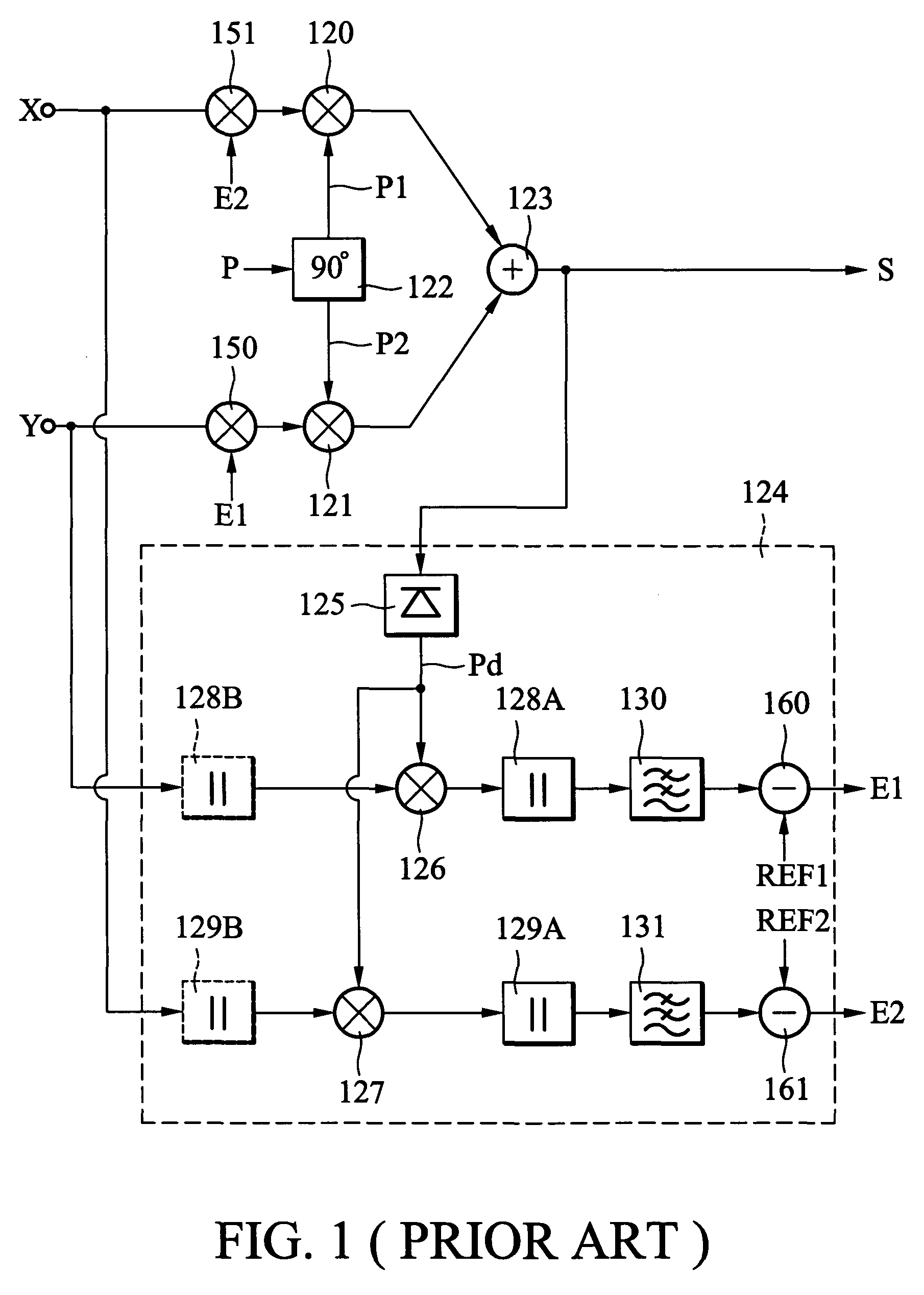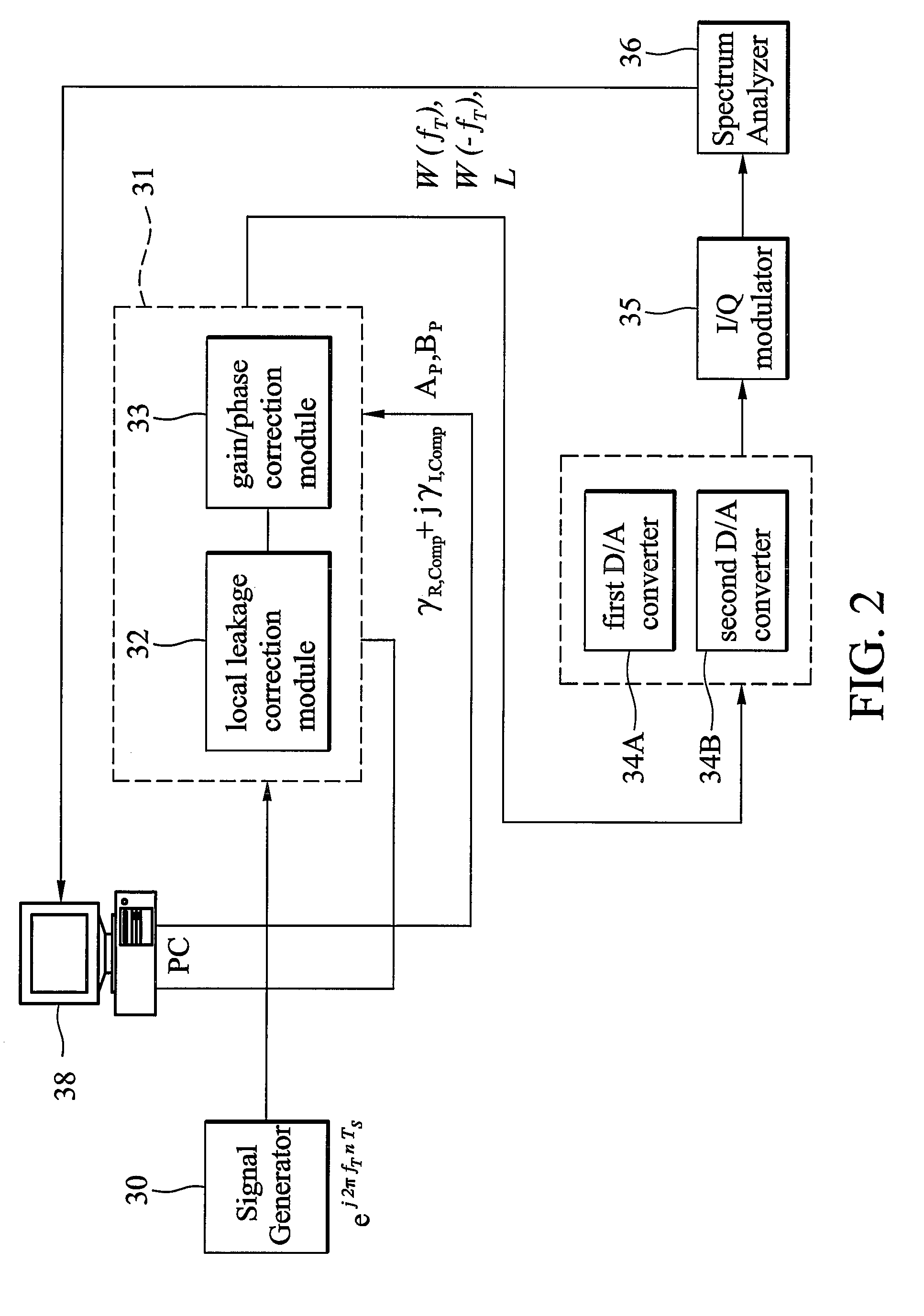Method and apparatus for I/Q mismatch calibration of transmitter
a transmitter and mismatch technology, applied in the field of compensation, can solve the problems of short model for analyzing the effects of signal impairment, most of the impairments can occur in either the transmitter or the receiver, and the effect of visible distortion
- Summary
- Abstract
- Description
- Claims
- Application Information
AI Technical Summary
Benefits of technology
Problems solved by technology
Method used
Image
Examples
Embodiment Construction
[0038]In the I / Q channel transmission architecture, there are two major sources of I / Q mismatch. One is the I / Q modulation and the other is the I / Q transmission band filtering. The mismatch resulting from the I / Q modulation is modeled as a constant over the useful signal bandwidth, which is called systematic I / Q mismatch while the I / Q transmission band filtering causes frequency-dependent I / Q mismatch. The present invention concentrates on the systematic I / Q mismatch. The mathematical theories of the invention will be described in the following.
[0039]The baseband signals for the I and Q channels before the I / Q modulation are represented as xI(t) and xQ(t) respectively. Assuming that an amplitude mismatch α, a phase mismatch θ, and zero local leakage results from the I / Q modulation, the equivalent baseband signals yI(t) and yQ(t) for the I and Q channels after the I / Q modulation are, without loss of generality, given by the equations:
yI(t)=xI(t)·(1+α)·cos(θ / 2)+xQ(t)·(1−α)·sin(θ / 2)
yQ(...
PUM
 Login to View More
Login to View More Abstract
Description
Claims
Application Information
 Login to View More
Login to View More - R&D
- Intellectual Property
- Life Sciences
- Materials
- Tech Scout
- Unparalleled Data Quality
- Higher Quality Content
- 60% Fewer Hallucinations
Browse by: Latest US Patents, China's latest patents, Technical Efficacy Thesaurus, Application Domain, Technology Topic, Popular Technical Reports.
© 2025 PatSnap. All rights reserved.Legal|Privacy policy|Modern Slavery Act Transparency Statement|Sitemap|About US| Contact US: help@patsnap.com



